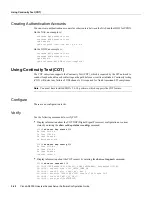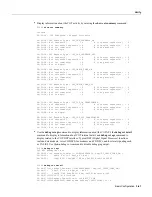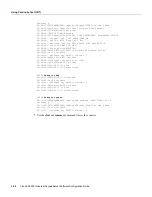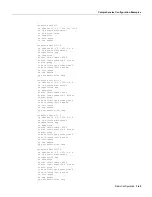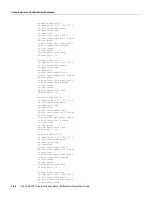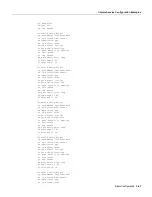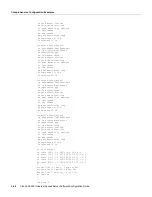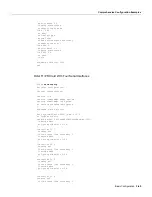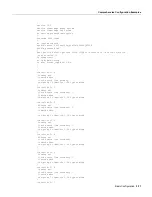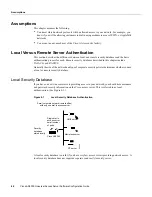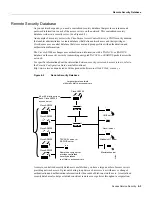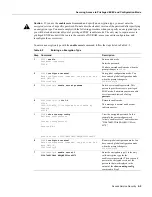
Assumptions
Cisco AS5300 Universal Access Server Software Configuration Guide
4-2
Assumptions
This chapter assumes the following:
•
You know which network protocols will be allowed access to your network. For example, you
know if you will be allowing customers to dial in using modems to access IP, IPX, or AppleTalk
networks.
•
You are not an advanced user of the Cisco AAA security facility.
Local Versus Remote Server Authentication
This section describes the differences between local and remote security databases and the basic
authentication process for each. Remote security databases described in this chapter include
and RADIUS.
Generally the size of the network and type of corporate security policies determines whether you use
a local or remote security database.
Local Security Database
If you have one or two access servers providing access to your network, you should store username
and password security information on the Cisco access server. This is referred to as local
authentication. (See Figure 4-1.)
Figure 4-1
Local Security Database Authentication
A local security database is useful if you have very few access servers providing network access. A
local security database does not require a separate (and costly) security server.
S6548
Small corporate network (remote office)
with only one dial-in access server
Cisco AS5300
NT server
Macintosh server
UNIX server
Single dial-in
access server,
small number
of ports.
Security
database
stored locally
Summary of Contents for AS5300 - Universal Access Server
Page 4: ......
Page 10: ...x Book Title ...
Page 34: ...Where to Go Next Cisco AS5300 Universal Access Server Software Configuration Guide 2 6 ...
Page 160: ...Cisco AS5300 Universal Access Server Software Configuration Guide ROM Monitor Commands B 8 ...
Page 184: ...Cisco AS5300 Universal Access Server Software Configuration Guide Where to Go Next C 24 ...
Page 192: ...Cisco AS5300 Universal Access Server Software Configuration Guide New Hardware Features D 8 ...

